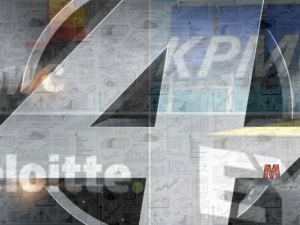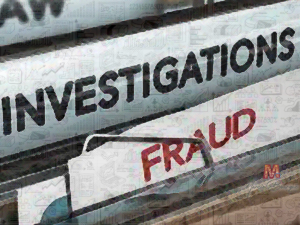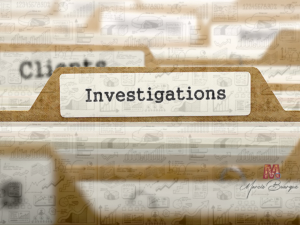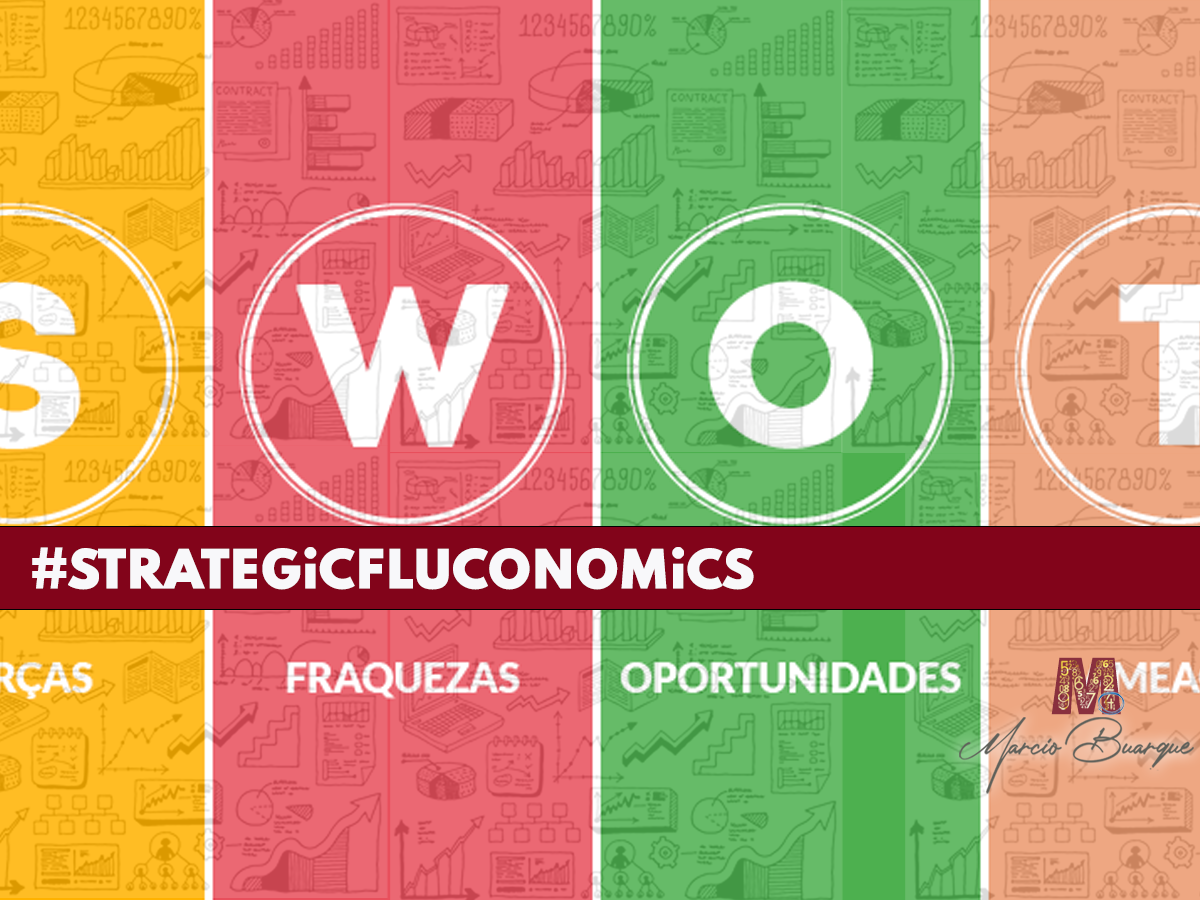
Today we start a new thread related to strategy—a draft of ideas using several concepts and models to facilitate a discussion at a higher level.
Let’s start with a technique that, in a way, is well-known in football, although it is mistreated and presented with a series of errors repeatedly: the SWOT analysis.
The following tables contain concepts, the entire structure of this technique, and my perception of constructing the SWOT matrix. It should be noted that this process requires questioning, discussion and alignment to consensually obtain a helpful result within effective strategic planning. Thus, everything presented in this edition cannot, under any circumstances, be taken as absolute truth. Nothing in life can have this kind of dogma approach, but debate and questioning are mandatory regarding strategy.
SWOT ANALYSiS DEFiNiTiON
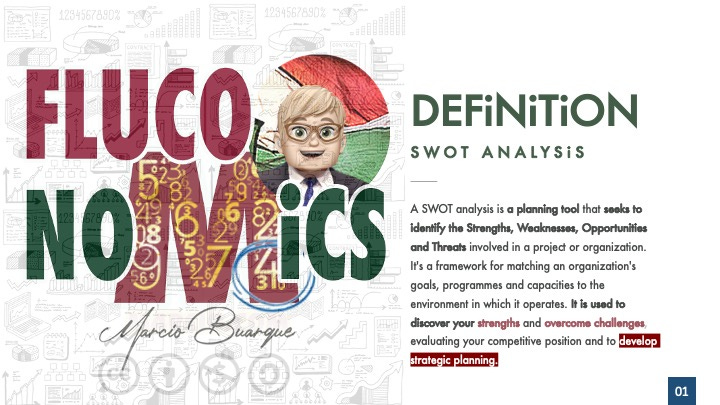
Understanding its concept prevents, for example, from making lists of topics of strengths and weaknesses and calling it SWOT. The technique goes far beyond these lists, as we will see throughout this issue.
Regarding strategic planning, associative models abuse the misuse of concepts and tools. In an attempt to build material for electoral campaigns, they tend to commit real atrocities, which end up unnoticed, as the target audience does not pay much attention to these things.
They advertise, saying what they think voters want to hear, simulating technical knowledge that, in practice, does not exist. This fallacious narrative helps to build electoral embezzlements.
FiRST STEP – THE OBJETiVE
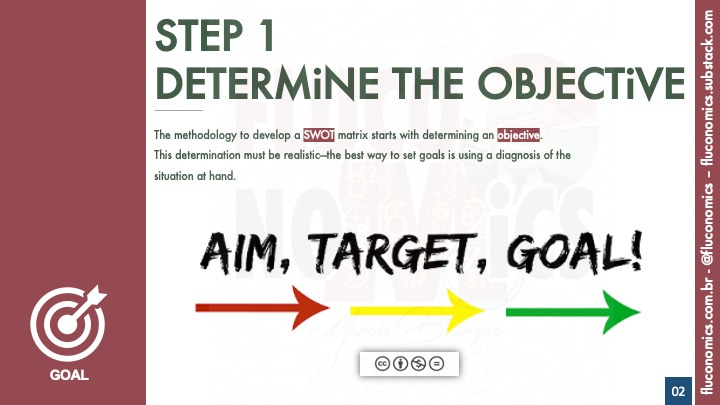
To determine an objective, I understand that it is necessary to have a diagnosis of the situation. From there, we can see more clearly the challenges that jeopardize the continuity and success of any business.
In my view, in a very straightforward way, this is the diagnosis of the current situation of Fluminense:
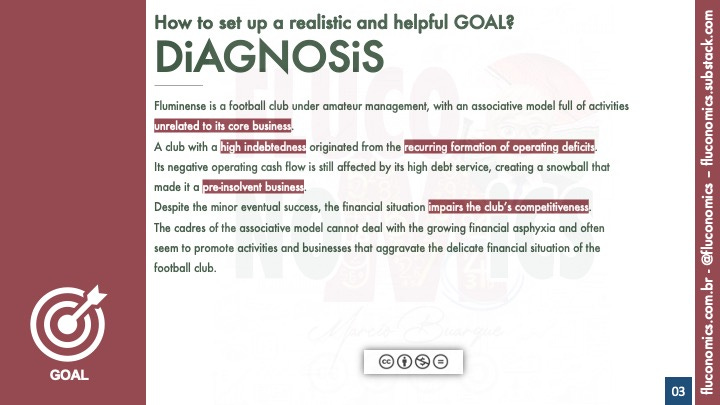
From the diagnosis, it is clear that from now on, we will have analysis and insights that will differ from anything produced by the leading players of the associative model. They are part of the problem to be solved.
As a result, please see the following objectives that I drafted for our strategy discussion:
The macro-objective is to reverse the insolvency framework and maintain operational continuity.
To achieve this objective, professionalization of its management is mandatory, including ending any influence of its associative model.
It is also mandatory to concentrate its activities on its core business, which generates more than 96% of Fluminense’s total net income. Concentrating is also required to keep competitiveness at a high level to avoid more revenue losses.
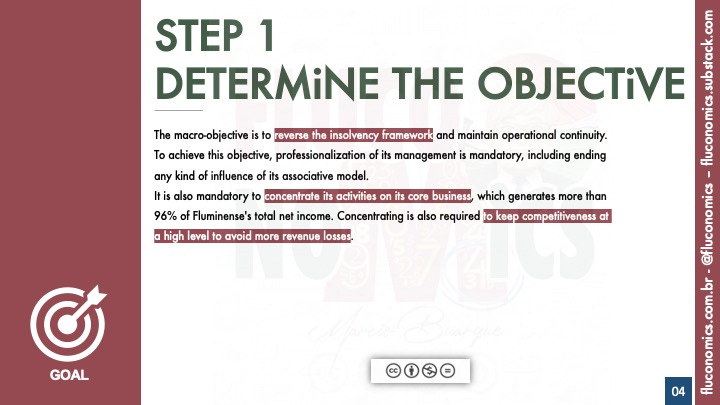
So, now we can start to list the S W O T topics correctly!
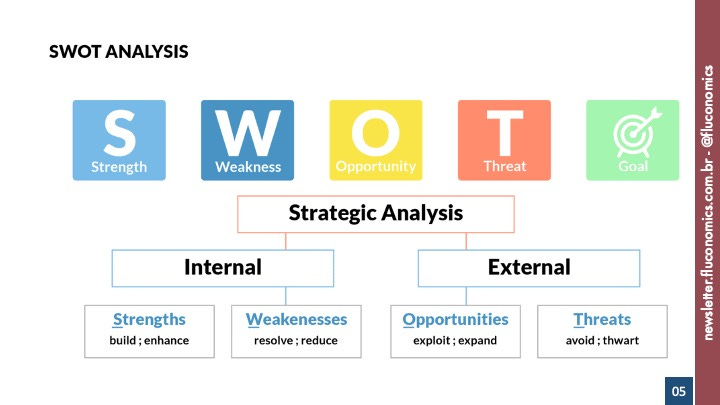
iNTERNAL FACTORS – STRENGHT
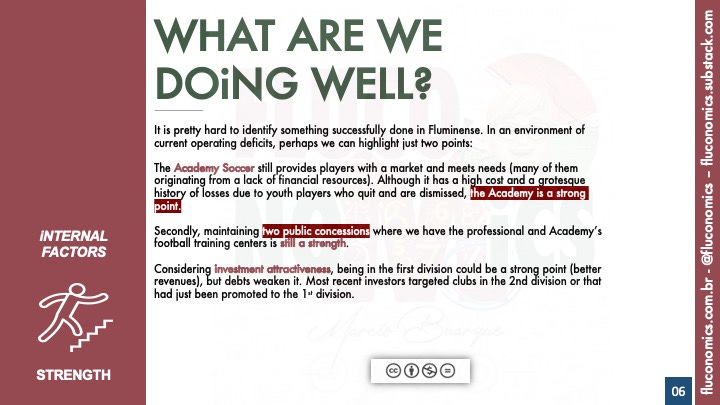
Fluminense’s Academy is undoubtedly one of the pillars of a business restructuring and remodeling process.
Competitive advantages can be obtained from it, both from a sporting and financial point of view.
The public concessions are also very interesting, as they allow the development of improvement projects on two training centers with a lot of potentials.
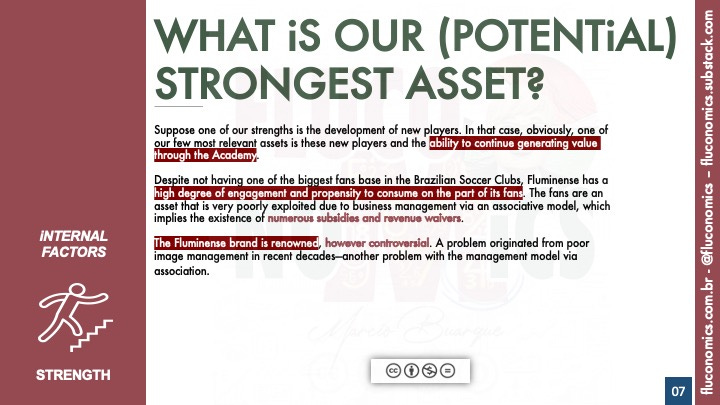
In addition to developing new talents, we can consider the fan base as one of Fluminense’s main assets. It is what supports quotas, sponsorships, and revenues in general.
Contrary to the vast majority, I do not consider the Fluminense brand one of our greatest strengths. Fluminense’s image management has always been chaotic, weakening it.
We spent years without master sponsorship and suppliers of material that was not the best option in the market; we had to exchange space on the shirt to find resources to carry out the fundamental day-to-day operations of a football club. All these facts show that the brand is no longer one of the strongest. And it was weakened by mediocre, inconsequential, and wasteful management. One day it was one of our greatest strengths; today, it is not.
An error in evaluating the brand looks relevant in strategic terms because an overestimation of the brand leads to plans that cannot bring the expected result. Strengthening the brand again should be part of the action plans to add value from a powerful asset.
iNTERNAL FACTORS – WEAKNESS
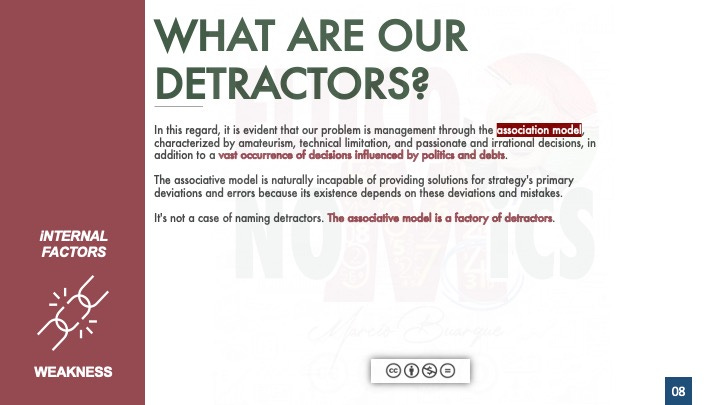
At this stage, it becomes evident how the associative model will always be unable to provide solutions unless it becomes a “kamikaze.” It is the root cause of our problems. Abolishing the associative model and eliminating its influence is the starting point of any strategic plan to rescue Fluminense’s football.
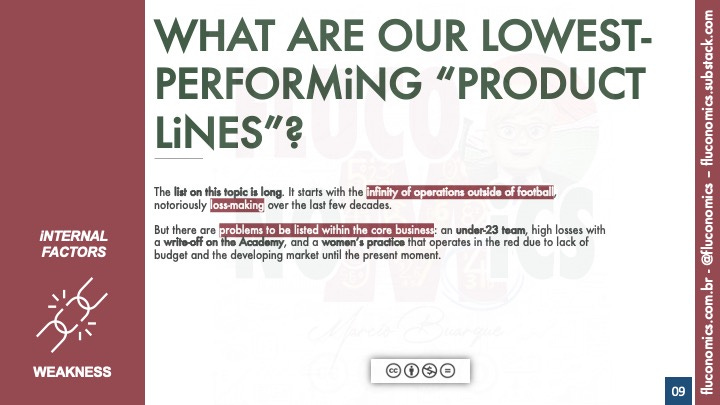
It is necessary to focus on business units that generate enough revenue to run their operations, provide leverage for leverage, and have a tangible and plausible financial return perspective.
EXTERNAL FACTORS – OPPORTUNiTY
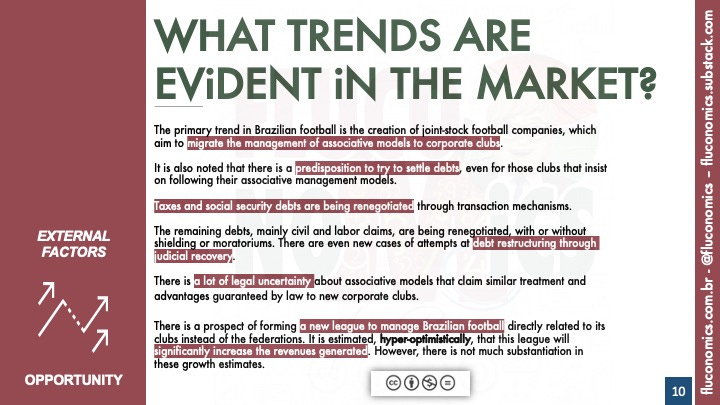
There is a very obtuse way of focusing actions on fans that make the football club the reason for their life, which even exists and can be very profitable in terms of niche.
But focusing on a niche of loyalists, combined with long periods without achievements, does not bring renewal to the fan base, which in addition to decreasing it over time, makes the remnant even more refractory to change.
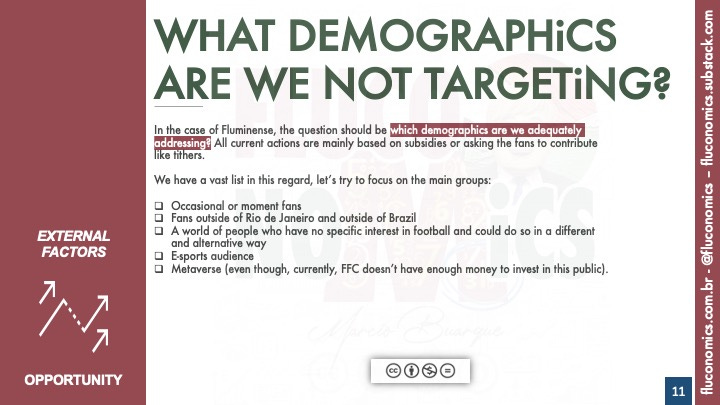
A couple of trends are not an opportunity but a threat: the constant reduction in pay-per-view/cable TV revenue. And in the severe case of Rio de Janeiro, the competition economically collapsed with a low average audience, meager broadcasting rights, and no prizes for the winner.
EXTERNAL FACTORS – THREAT
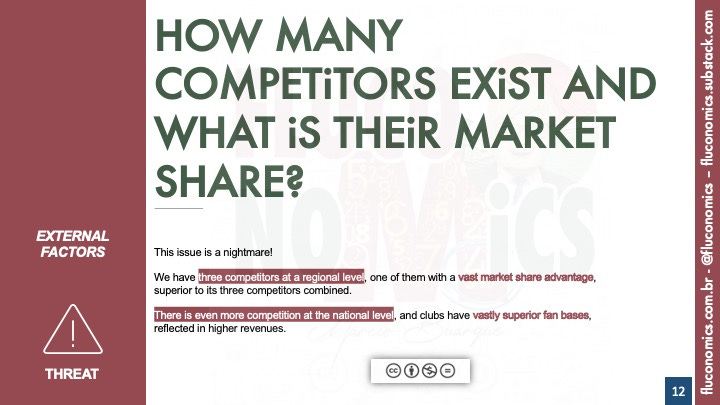
Our position in the market is one of the best indicators that the mere copying of projects from other clubs may not bring the same results or even result in something positive.
Here, the need to be different from the others is latent to maximize its reduced fan base and, above all, to create ways to grow it in such a hostile environment in terms of competition for market share.
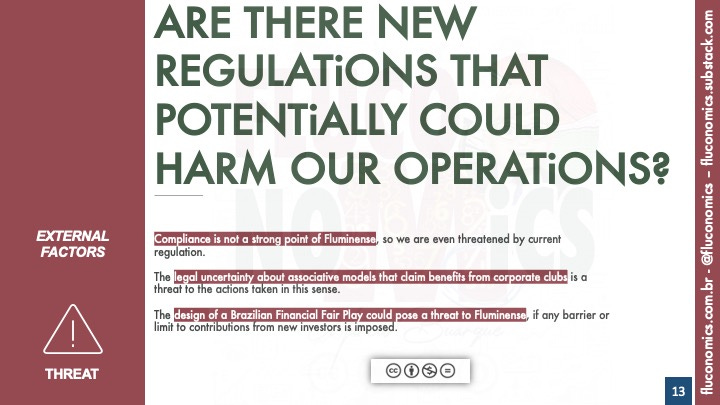
That way, we were able to create a helpful outline to try to build a SWOT matrix closer to reality and the needs of a strategic plan. Players of the associative model tend not to agree very much with everything written. Still, we must think about Fluminense from the outside and create many bridges with the more developed markets.
Use Twitter to interact with this edition.
In the next issue, I will outline the five forces model.
See you soon!

